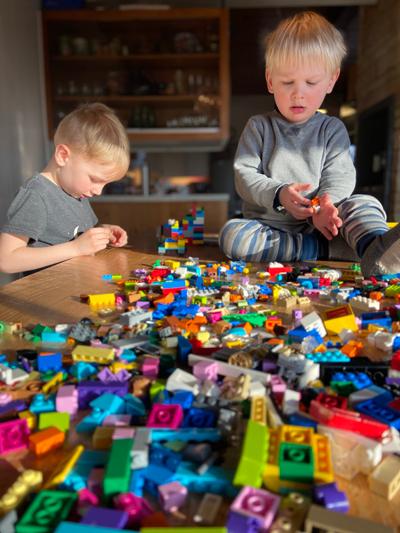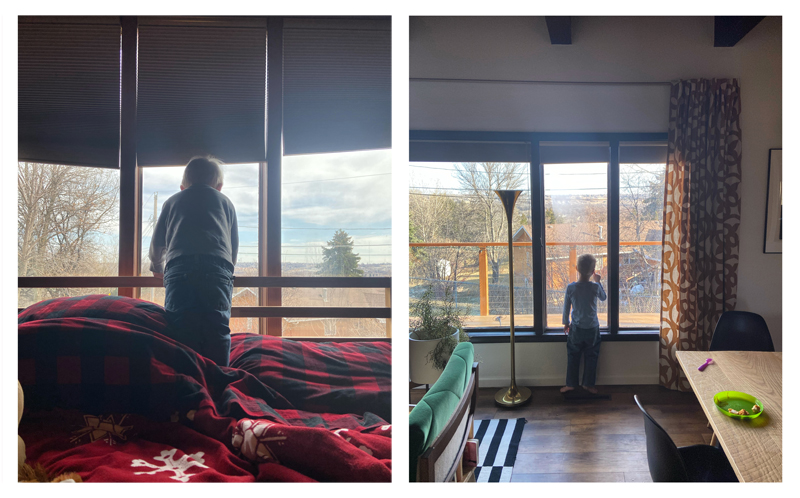Stander uses pandemic to teach more than just photography skills

By Michael Linnell
University Communications Director
michael.linnell@minotstateu.edu
MINOT, N.D. – Minot State associate professor of art Ryan Stander has often used self-documentary as a project to help students develop a critical eye towards their world.
This year, the COVID-19 pandemic forced a version of this project that, in the end, became a valuable learning tool for Minot State students.
“Art can be found anywhere,” Stander said. “What it takes is the creative eye to see it and the skills to capture what you see. I’ve often used self-documentary as a semester-long project that culminates in a self-published book.
“As COVID took over our semester, I transitioned my students to documenting their experiences under the coronavirus. During Spring Break, I emailed students urging them to start shooting as this will be a watershed moment in their life and that it was critical that they open their eyes to what was happening in the world and would soon be on their doorstep. One of the difficulties for long term projects are to continually see something new. I encouraged them to continually turn the subject over and look for a new facet to explore.”
The project was rooted in the overall changes COVID-19 forced on teaching and learning at the University and Stander’s photography students found it stimulating. Becoming ever more aware of their surroundings gave the project added layers beyond just the technical side of capturing the photo.
“Being a journalism student, I am observant of my surroundings by definition and that's a key part of my creative vision,” said junior Alyson Heisler. “I do find that I'm quite particular about what I want to be in my photos, so I look specifically for certain elements, lighting, colors, etc., to fill the vision I'm looking for. I'm not one to create the visual or set up the shoot, I like to photograph organically what’s existing around me then work with my camera settings to fit the emotion I want to convey in the photo.”
Stander believes the global pandemic gave students a unique look into something nearly everyone on planet was facing, yet each individual has a distinctive experience.
“What I find interesting is the global phenomenon of COVID — it is a universal experience but each of us is experiencing it differently,” he said. “Some students have returned home, others kept from returning home. Some return to other duties of care for family members.

That included Stander as he participated in the project as well as faced the pandemic with his family.
“My roll turned to full-time caregiver to our two boys while teaching for the first two weeks. After that, Karina (Stander’s wife Karina Stander, MSU’s director of residence life) and I have been splitting care of our boys so we each can get some of our work done during the day.
“I often want to do the projects with the students but rarely have time. This period allowed me to take this project on as well. I don’t take as many photographs of the family as I should, and this allowed me to focus my attention on what was happening with the boys and in our home together. My style, which might be somewhat of a curious blend of formalism and banality, and a love of line and shadow, has not changed. I have just constrained what I am shooting and what I am shooting with (my iPhone only). By putting such parameters on the project, I force myself into other creative modes and solutions.”

Heisler’s work also centered around a unique family dynamic as she faced quarantine with her sister and her sister’s family. While she fulfilled the parameters of the project, the photos had a deeper connection.
“I viewed the time as an opportunity to connect and really appreciate spending time being with family,” she said. “I found intriguing moments in the way children see and understand about the coronavirus; they know that things have changed, but don't fully absorb what is happening in relation to their everyday activities. I wanted to capture how life moves on, in a sense, for families.”
The process of capturing images didn’t change due to remote learning, but many aspects of the classroom, including grading, feedback, and structure, underwent fundamental changes.
Heisler, skeptical at first, settled into a new routine.
“In broadcasting, most of my classes are quite hands-on, so there were some bumps in the transition, but I adapted and enjoyed the ability to learn different technology,” she said. “I learned to film and edit video, mostly on my own, and that's something I didn't imagine I'd ever do often. I discovered that I really enjoy it, which surprised me.”
Stander agreed, believing many of the systems in place and new processes were a benefit, even in an imperfect situation.
“Overall, we adjusted to online courses,” he said. “It was trial by fire and it was one of the steepest learning curves that I have experienced. Overall, it was a positive experience for me as an instructor. I am always working to improve my courses and online instruction has certain benefits. The hardest thing I found were the critiques. Doing asynchronous critiques do allow students to be thoughtful and, I think, more honest about the work presented. Each digital platform has its strengths and weaknesses and people across the nation were scrambling to find which worked best for them.”
As the semester finished, Stander’s only concern was the end outcome for his students.
“It is a poignant time to explore. My hope is that this project has given each student an opportunity to explore, reflect on, and cope with the pandemic’s effects on their life and community,” he said. “Students can certainly continue the project after the class ends, but they will have created a unique record of their experiences to keep and share.”
About Minot State University
Minot State University is a public university dedicated to excellence in education, scholarship, and community engagement achieved through
rigorous academic experiences, active learning environments, commitment to public service, and a vibrant campus life.
Published: 06/04/20



